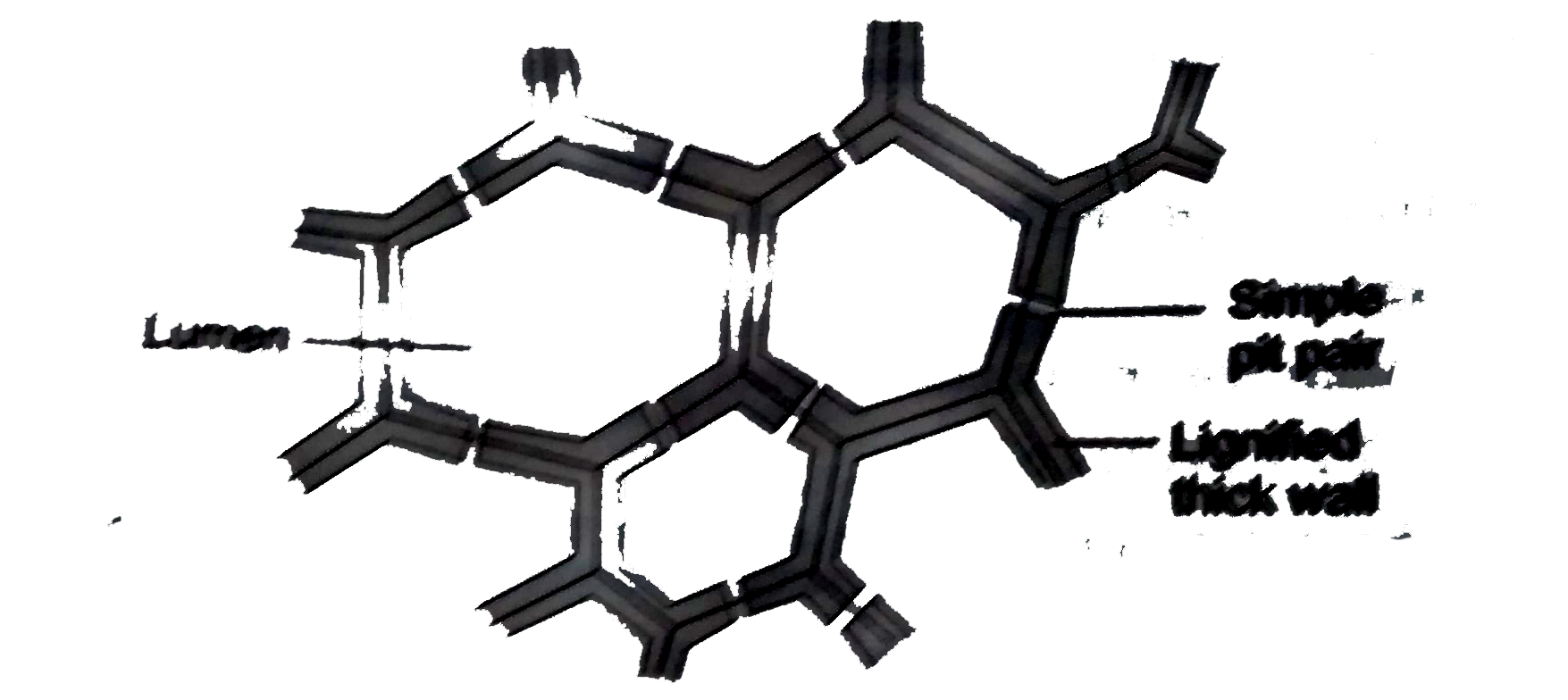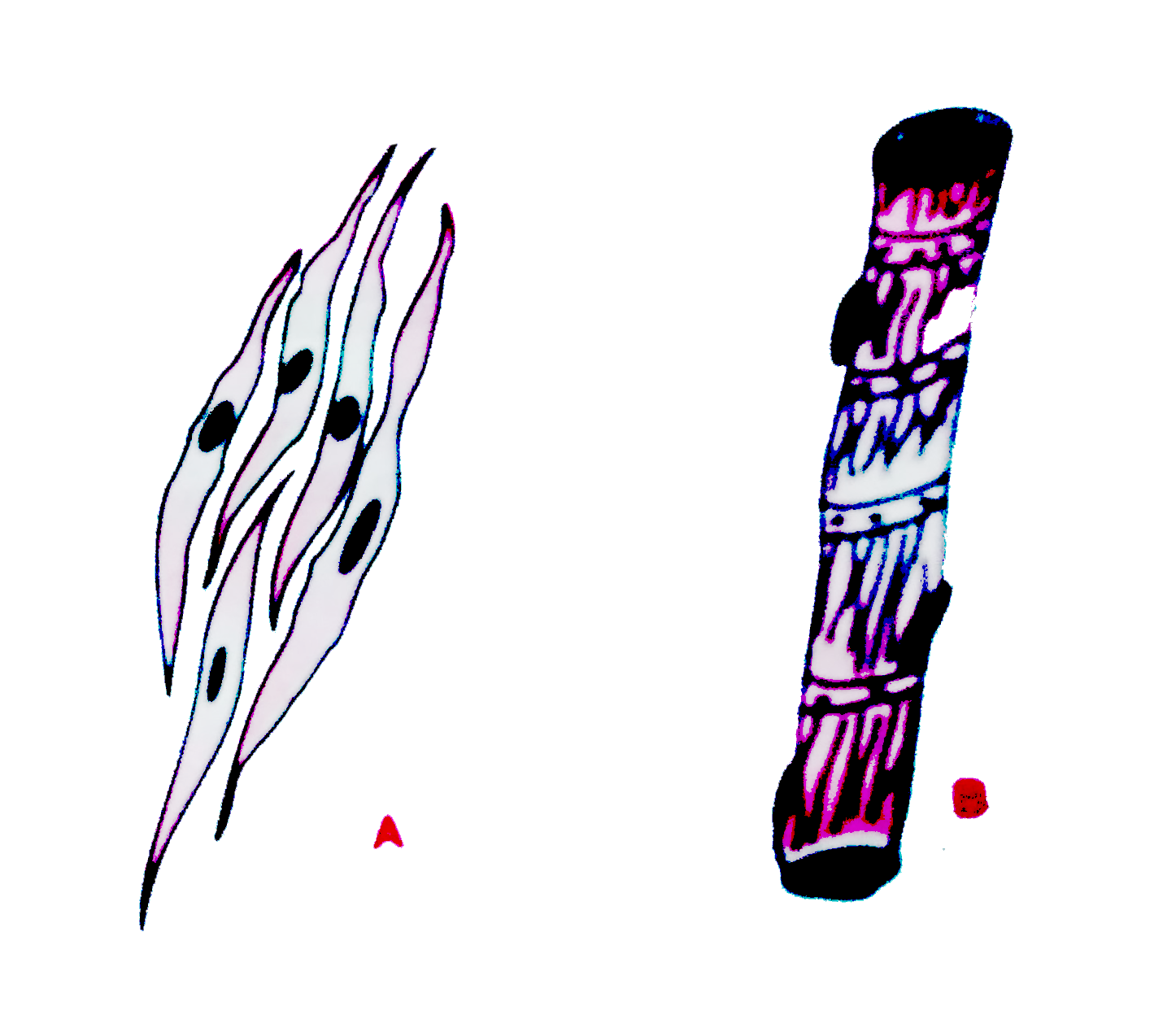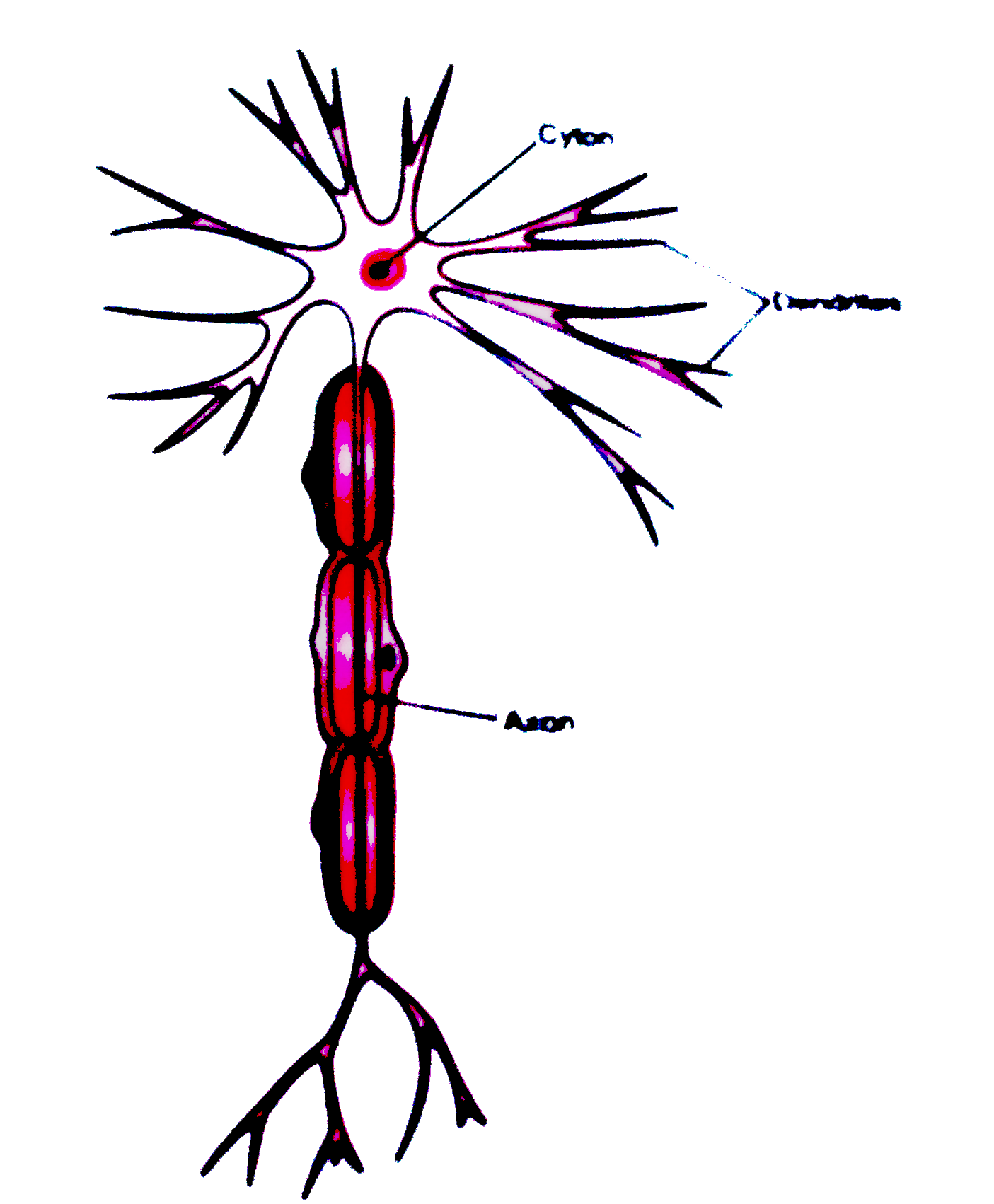Complete Solutions to Short Answer Questions of chapter TISSUES of Class 9 book with complete answers and questions
| Class 9 | BIOLOGY |
| Chapter | TISSUES |
| PRADEEP | Short Answer Questions |
| Number Of Questions | 71 |
| Academic Year | 2023-24 |
Animals of colder region and fishes of cold water have thicker layer of subcutaneous fat. Describe why ?
03:01View SolutionMatch the items of column A and B
 05:12View Solution
05:12View SolutionMatch the items of colume A and column B.
 02:53View Solution
02:53View SolutionIf a potted plant is covered with a glass jar, water vapours appear on the wall of glass jar. Explain.
03:10View SolutionName the different components of xylem and draw a living component.
01:56View SolutionDraw and identify different elements of phloem
02:30View SolutionWrite true (T) or false (F)
(a) Epithelial tissue is protective tissue in animal body.
(b) The lining of blood vessels, lung alveoli and kidney tubules are all made up of epithelial tissue.
(c) Epithelial cells have a lot of intercellular spaces.
(d) Epithelial layer is permeable layer.
(e) Epithelial layer does not allow regulation of materials between body and external environment03:50View SolutionDifferentiate between voluntary and involuntary muscles. Give one example of each type.
03:40View SolutionDifferentiate the following activities on the basis of voluntary (V)
involuntary (IV) muscles.
(a) Jumping of frog
(b) Pumping of the heart
(c) Writing with hand
(d) Movement of chocolate in your intestine03:20View SolutionFill in the blanks
(a) Lining of blood vessels is made up of…… .
(b) Lining of small intestine is made up of……. .
(c) Lining of kidney tubules is made up of…… .
(d) Epithelial cells with cilia are found in ..... of our body05:28View SolutionWhich structure protects the plant body against the invasion of parasites ?
03:24View SolutionFill in the blanks
(a) Cork cells possesses……... on their walls that makes it impervious to gases and water.
…….have tubular cells with perforated walls and are living in nature.
(c) Bone possesses a hard matrix composed of…….. And …….. .02:45View SolutionWhy is epidermis important for the plants?
02:45View SolutionFill in the blanks :
(a)……… are forms of complex tissue.
(b) ……..have guard cells.
(c) Cells of cork contain a chemical called……. .
(d) Husl of cocunut is made of ……. Tissue.
(e) …… and ….. Both conducting tissues.
(f) …….... gives flexibility in plants.
(g) Xylem transports ........ and ........ from soil.
(h) Phloem transport ..........from .........to other parts of the plant.03:39View SolutionMERISTEMATIC TISSUE
13:54View SolutionWhere are the intercalary meristem located.
01:45View SolutionWhat are the different types of parenchyma ? Write their special features.
02:38View SolutionWhat is the function of epidermis ?
02:29View SolutionWhat are the main functions of nervous tissue ?
02:38View SolutionGive the example of some involuntary movements.
01:56View SolutionWhere are fasts stored in out body ?
02:35View SolutionSelect the examples of -(a) Complex permanent tissue, (b) Simple permanent tissue, (c) connnective tissue, (d) Muscular tissue, and (e) Nervous tissue, from the given list :
Blood , phloem , muscle, Bons, Sclerenchyma, Neuron, Cartilage, Chlorenchyma02:22View SolutionName the tissue responsible for the Following functions in our body :
(a) Storage of fat , (b) Movement of limbs, (c) Movement of food in the alimentary canal
(d) Act as barrier to keep different body systems separate.03:09View SolutionDifference between bone and cartilage is
01:34View SolutionWhat is the differnence between parenchyma and collenchyma?
06:29View SolutionGive different components of phloem tissue.
02:40View SolutionName two complex permanent tissues in vascular plants. What are these commonly called ?
02:53View SolutionName the animal tissue which act
(i) as protective covering of the body (ii) for the transmission of messages.03:00View SolutionWhich animal epithelial tissue is called pavement epithelium ? Where is it located ?
02:34View SolutionName two components of blood and give functions of blood plasma.
02:42View SolutionWhat is lymph ? Give its components.
02:06View SolutionDraw a labelled diagram of a neuron.
04:58View SolutionName the conductive tissues of vascular plants which are responsible for conduction of water and inorganic solutes , and for the translocation of organic solutes respectively.
03:10View SolutionWhat is the main function fo collenchyma and aerenchyma ?
02:59View SolutionName the connective tissue which joins (a) bone to another bone, and (b) muscle to a bone.
02:43View SolutionGive main functioin of (a) Red blood corpuscles (b) White blood corpuscles.
02:14View SolutionName the skeletal tissue which is soft and elastic, has entirely organic matter and shows unidirectional growth .
(b) Name the skeletal tissue, which is hard and tough , has both organic and inorganic matter and shows bidireactional growth.05:19View SolutionName the tissues which are responsible for the following :
(i) bringing flexibility in plants (ii) making plants hard and stiff
(iii) covering the animals body
(iv) for making responses to stimuli02:46View SolutionWhat is apical meristem ? Where is it located and what are its functions ?
02:29View SolutionWhere would you find striated muscle in human body ? What is their function ?
02:32View SolutionGive an example of abundant fluid connective tissue. What is its composition ?
02:01View SolutionDefine mersitematic tissue ? Write down characteristics of meristematic cells.
06:03View SolutionWhat is the differnence between parenchyma and collenchyma?
06:29View SolutionDescribe the various components of xylem
02:41View SolutionDescribe the structure and function of different types of epithelial tissues. Draw diagram of each type of epithelial tissue.
05:51View SolutionDifferentiate between tendon and ligament.
02:58View SolutionName the tissues which show the following features :
1. Cells are living , cells show thickening, provides mechanical support to plants
2. Cell are dead, cells show thickening, provides mechanical support to plants, made up of one type of cells
3. Cell are living , cells contain green coloured chloroplast, possess intercellular spaces.03:40View SolutionDistinguish between the following :
(a) Cartilage and bone on the basis of matrix.
(b) Blood and lymph on the basis of components.
(c) Simple tissues and complex tissues on the basis of constitution of cells.02:50View SolutionWhat is the difference between collenchyma and sclerenchyma?
02:35View SolutionSIMPLE TISSUE-SCLERENCHYMA
12:28View SolutionWhat is xylem in vascular plants ? Give its components and functions.
03:23View SolutionWhat is phloem ? Write its components and functions.
02:45View SolutionWrite brief note on-
(i) Adipose tissue
(ii) Areolar tissue.01:42View SolutionDescribe structure and functions of bone.
10:24View SolutionDraw diagram of neuron and briefly write about its components.
02:25View SolutionAnswer the following :
(i) Which skeletal tissue shows unidirectional growth ?
(ii) Which animal tissue is responsible for movement of body parts and locomotion ?
(iii) Which animal tissue is protective in function ?03:21View SolutionWrite these similarities and three dissimilarities between ligaments and tendons.
03:32View SolutionBriefly explain the following :
(a) Ligament (b) Tendon (c) Neuron.03:04View SolutionGive functions of the following :
(i) Blood platelets (ii) Sieve tubes (iii) Cardiac muscle.03:21View SolutionWhat is a cartilage ? How is it different from a bone ?
03:02View Solution(a) Which parts of the body are composed of nerve cells?
(b) Write main function of neuron.03:00View Solution(i) Study the prepared slide of given plant tissue. Give one character that enables you to identify it as parenchyma.
(ii) What is its main function ?02:05View SolutionStudy the given slide of sclerenchyma plant tissue and answer the following questions :
(i) Name the composition of lignin deposited uniformly on its secondary walls.
(ii) Name atleast twp plants whose sclerenchyma fibres are commerically exploited.01:41View Solution(a) You have been asked to study the given slide of plant tissue. Given two characters that enable you to identify it as collenchyma .
(b)What is its main function ?03:15View Solution(a) Tarun was asked to draw a diagram of sclerenchyma as seen in longitudinal section and label it . His figure is given below. Point out the mistake in the figure.

(b) Are the cells of sclerenchyma live or dead ?01:20View Solution(a) Two slides were observed under the microscope for spot test as shown below. Given the correct identification of the two spots.

(b) Give one characteristic feature of each spot.02:32View Solution(a) A student observed a nerve cell and drawn the following figure. He did a mistake in labelling. Find out the mistake

(b) Where would you find nerve cells ? What is the function of nerve cell ?02:43View Solution1. List three parts of nerve cell.
2. In which part of nerve cell, Nissl's granules present ? What is their composition ?02:17View Solution(a) Observe slide of smooth muscle fibre under the microscope and draw its labelled diagram.
(b) Give name of atleast two structures where smooth muscle fibres are present in humans.02:36View Solution(a) View prepared slide of cardiac muscle fibres and draw its well labelled diagram.
(b) Where are these fibres present ? Are these voluntary or involuntary in action ?02:24View SolutionStudy the prepared slide of striated muscles fibres and answer the following questions :
(a) Are striated muscles voluntary or involuntary in action ?
(b) Why are these called striated muscles fibres ?
(c) Where are these present in human body? Name any two regions/parts.
What is the function of striated muscles ?02:59View Solution
Short Answer Questions questions and complete solutions for chapter TISSUES of PRADEEP BIOLOGY (HINGLISH) of Class 9
